Embark on a journey of fun facts about Mount Rushmore, where colossal faces grace the South Dakota mountains. Crafted by artist Gutzon Borglum, these faces belong to Washington, Jefferson, Roosevelt, and Lincoln. Discover the 14-year construction, engage in debates on culture and the environment, and delve into the monumental tales etched in this iconic National Memorial since 1925.

Uncover the wonders of Mount Rushmore, towering at 60 feet, symbolizing America’s growth. Explore changes in its design, challenges in carving granite, and the artistry behind each president’s portrayal. From captivating nighttime lighting to the intriguing Hall of Records, every detail adds to the tale.
Go beyond the sheer size and discover fascinating Mount Rushmore details. From wildlife in the Black Hills to the artist’s preserved studio, delve into ongoing preservation efforts. Unravel controversies, from fireworks debates to tribal opinions, transforming Mount Rushmore into more than a national treasure—becoming a canvas rich in history and complexity.
QUICK FUN FACTS ABOUT MOUNT RUSHMORE
- Sculpted by Gutzon Borglum, Mount Rushmore features faces of Washington, Jefferson, Roosevelt, and Lincoln.
- Construction spanned 14 years, concluding in 1941.
- Each president’s face stands at a towering 60 feet.
- Originally intended to include upper bodies, it faced budget constraints.
- Mount Rushmore symbolizes birth, growth, development, and preservation of the U.S.
- The mountain was named after New York lawyer Charles E. Rushmore.
- Only “America’s Shrine of Democracy” was completed among planned inscriptions.
- Nighttime lighting transforms the monument into a captivating spectacle.
- The Hall of Records, behind Lincoln’s head, holds important U.S. documents.
- The granite rock presented carving challenges during construction.
- Mount Rushmore is part of the Black Hills, with cultural significance for Native American tribes.
- Nearby, the Crazy Horse Memorial contrasts with Mount Rushmore’s historical focus.
- Climbing on the sculpture is strictly prohibited for safety and preservation.
- Wildlife, including mountain goats and marmots, inhabit the surrounding areas.
- The Lincoln Borglum Visitor Center provides insights into the monument’s history.
- Mount Rushmore is a National Memorial, designated in 1925.
- The Presidents’ Trail offers different vantage points for visitors to explore.
- Gutzon Borglum’s son, Lincoln Borglum, completed the project after his father’s death.
- Ongoing funding challenges persist for maintenance and preservation.
- The site has featured in films like Alfred Hitchcock’s “North by Northwest.”
Also Read this: 35 Amazing Facts About Rocky Mountains
Creation and Location
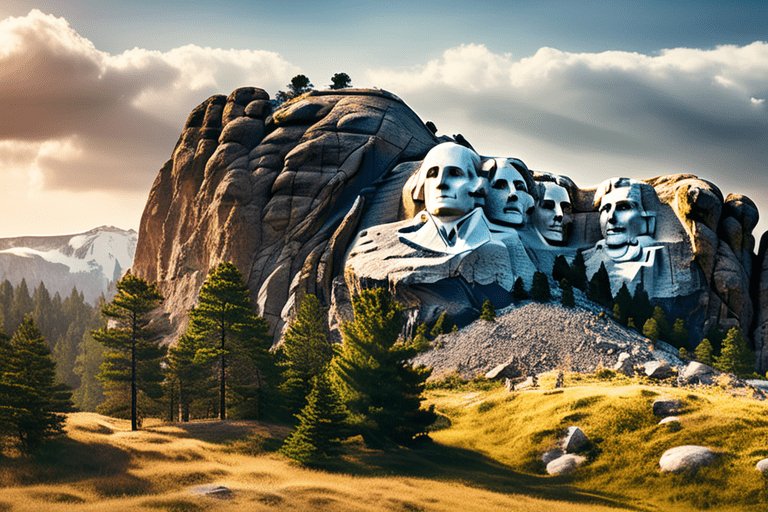
Mount Rushmore, nestled in South Dakota’s Black Hills, was completed in 1941. The majestic sculpture features the faces of four iconic American presidents—George Washington, Thomas Jefferson, Theodore Roosevelt, and Abraham Lincoln—carved into the enduring granite rock.
Sculptor
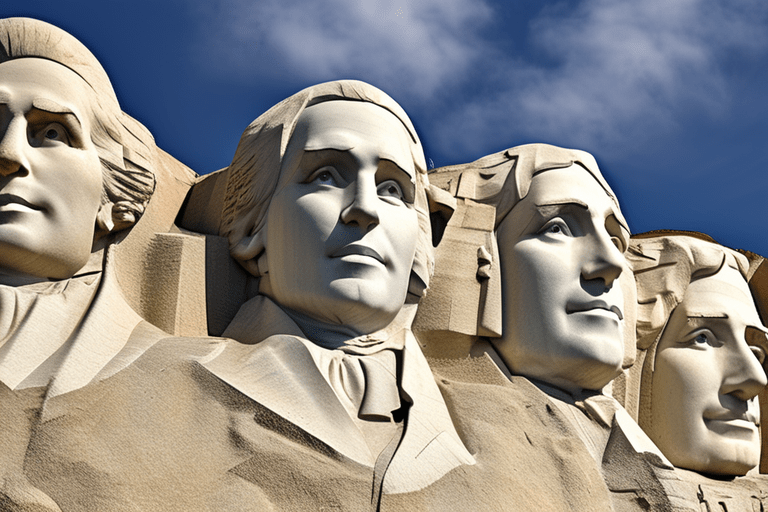
The visionary sculptor behind Mount Rushmore was Gutzon Borglum. Overseeing a team of 400 workers for 14 years, Borglum brought his artistic brilliance to transform the mountain into a national treasure.
Selection of Presidents
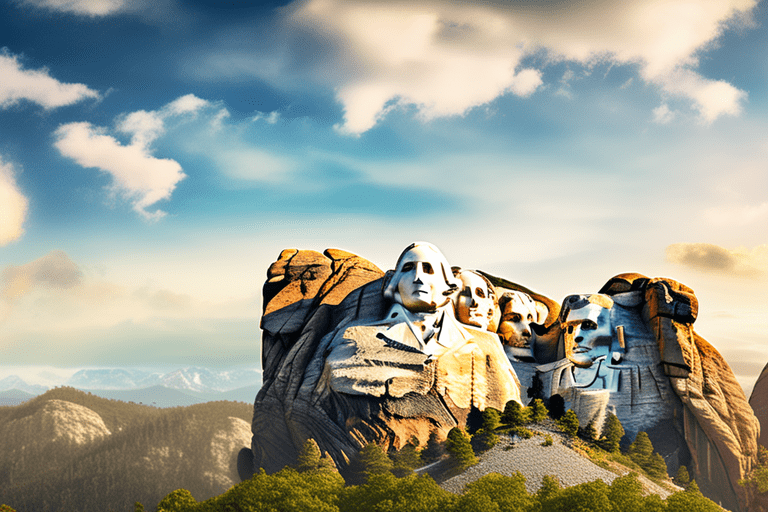
Washington, Jefferson, Roosevelt, and Lincoln were chosen to symbolize America’s birth, growth, development, and preservation. Each president played a pivotal role in shaping the nation’s history.
Scale of Sculpture
The enormity of each president’s face is awe-inspiring, towering at about 60 feet high—equivalent to a six-story building. The grand scale adds to the monument’s impact.
Symbolic Significance
Beyond its monumental appearance, Mount Rushmore is a symbol of freedom, democracy, and the rich historical tapestry of the United States. It stands as a testament to the nation’s core values.
Mount Rushmore’s Name
Charles E. Rushmore, a New York lawyer, lends his name to the mountain, immortalizing the site as Mount Rushmore.
Original Design Changes
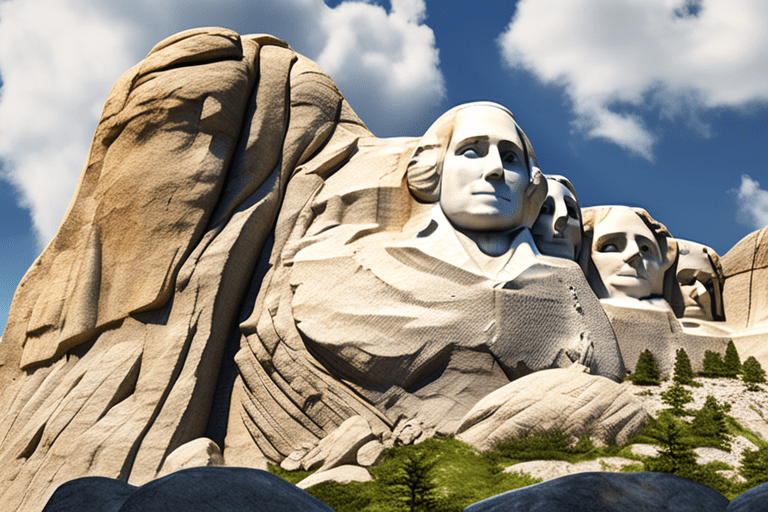
Initially designed to include the presidents’ upper bodies, budget constraints led to the project focusing solely on the majestic faces. The financial challenges added a layer of complexity to the endeavor.
Lack of Funding
Mount Rushmore faced financial hurdles, relying on federal funds and private donations for completion. The struggle for funds shaped the course of the project.
Environmental Impact
The construction of Mount Rushmore altered the environment significantly, involving the removal of over 800 million pounds of rock. The environmental changes underscore the magnitude of the project.
National Memorial
In 1925, Mount Rushmore earned the designation of a National Memorial, highlighting its importance in American history and culture.
Rough Terrain
The choice of granite presented challenges during the carving process, emphasizing the determination needed to shape the faces on the rugged mountain.
Presidents’ Portrayals
Gutzon Borglum meticulously captured the unique features and expressions of each president, creating a timeless representation of leadership.
Jefferson’s Role
Thomas Jefferson’s inclusion honors his role in the Louisiana Purchase, a pivotal moment in U.S. history that doubled the nation’s size.
Lincoln’s Significance
Abraham Lincoln, representing the preservation of the Union during the Civil War, adds a profound layer of historical significance to Mount Rushmore.
Theodore Roosevelt’s Inclusion
Theodore Roosevelt earned his place for his contributions to the Panama Canal’s construction and his efforts in conservation, reflecting the diverse facets of American leadership.
Crazy Horse Connection
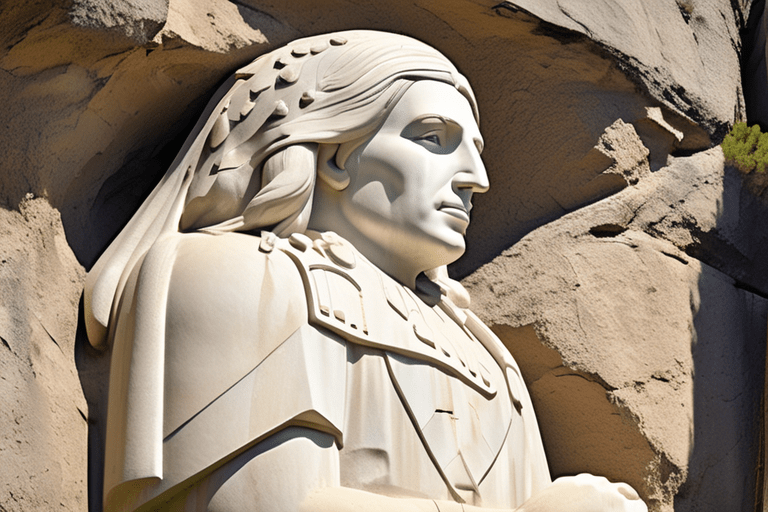
In close proximity, the Crazy Horse Memorial pays homage to another Native American leader, providing a contrasting narrative to Mount Rushmore’s historical focus.
Night Lighting
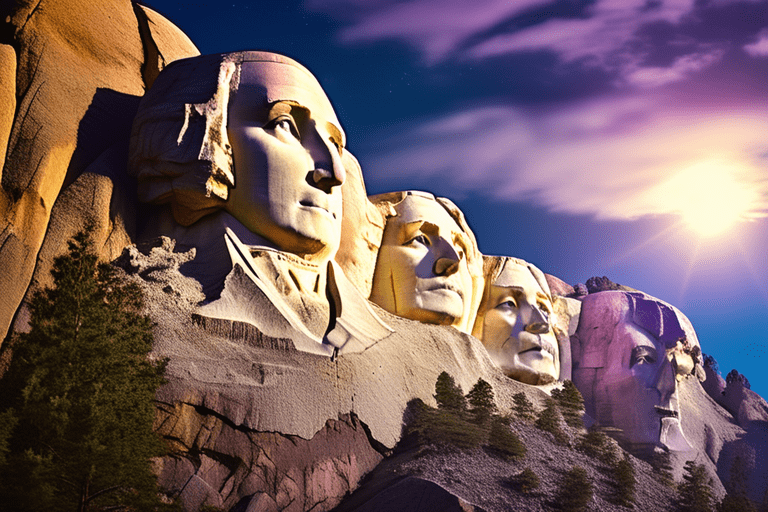
Mount Rushmore’s special lighting for nighttime viewings transforms the monument into a captivating spectacle, offering visitors a different perspective.
July 4th Celebrations
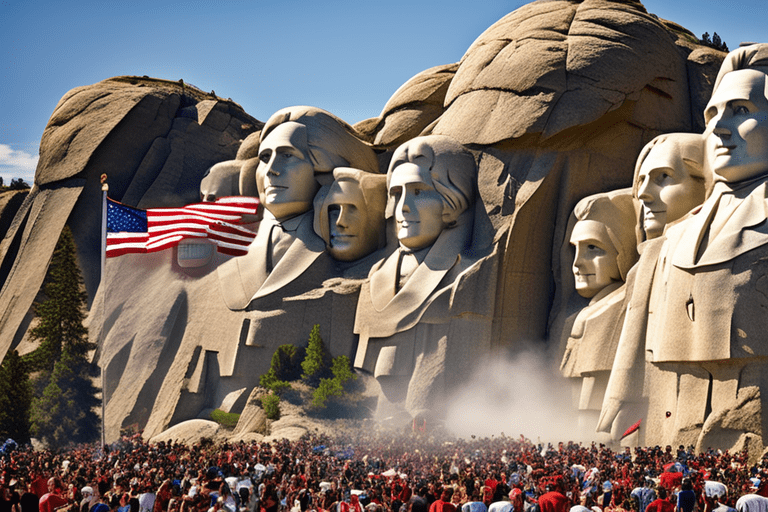
The monument becomes a focal point for Independence Day celebrations, attracting thousands who gather to commemorate the nation’s founding.
Presidential Trail
The Presidential Trail offers visitors a unique perspective, allowing them to explore different vantage points and gain insights into the sculptures.
Visitor Center
The Lincoln Borglum Visitor Center serves as an educational hub, providing visitors with a deeper understanding of Mount Rushmore’s history and significance.
Hall of Records
A hidden chamber behind Lincoln’s head houses the Hall of Records, preserving important U.S. documents and adding an element of mystery to the monument.
Weathering and Erosion
Mount Rushmore, despite its grandeur, faces the ongoing challenges of weathering and erosion, requiring periodic maintenance to preserve its splendor.
Cultural Importance
The site holds cultural significance for Native American tribes, leading to ongoing debates about its impact on sacred land.
Movie Appearances
Mount Rushmore has graced the silver screen, featuring prominently in films such as Alfred Hitchcock’s “North by Northwest.”
Presidential Writings
Gutzon Borglum’s vision included inscribing key historical texts on the monument. However, only “America’s Shrine of Democracy” was completed, leaving an unfinished aspect to the original plan.
Rock Climbing Ban
Climbing on the sculpture is strictly prohibited to ensure the safety of visitors and prevent any damage to the monument.
Symbol of Freedom
Mount Rushmore transcends its physical presence, standing as a symbol of American freedom and democracy that resonates worldwide.
Economic Impact
The monument significantly contributes to the local economy, drawing millions of tourists annually who explore the surrounding area.
Sculptor’s Legacy
Gutzon Borglum’s legacy lives on through his son, Lincoln Borglum, who completed the project after his father’s passing, ensuring the realization of their shared vision.
Funding Challenges
Ongoing funding challenges persist for maintenance and preservation efforts, prompting ongoing discussions about the monument’s future.
Animals on Site
Wildlife, including mountain goats and marmots, find a habitat in the surrounding areas of Mount Rushmore, adding a touch of nature to the monumental site.
Black Hills Connection
Mount Rushmore’s location in the Black Hills holds cultural significance for Native American tribes, contributing to the ongoing dialogue about the site.
Educational Programs
Mount Rushmore actively engages visitors through educational programs, offering insights into American history and the construction of the monument.
Virtual Tours
In the digital age, Mount Rushmore provides virtual tours, allowing people worldwide to experience the grandeur of the site remotely.
Mount Rushmore Half Marathon
The annual Mount Rushmore Half Marathon attracts runners, providing a unique opportunity to experience the natural beauty of the Black Hills.
Permits for Events
Special permits are required for events and gatherings at Mount Rushmore, ensuring responsible use of the site.
Construction Deaths
Tragically, some workers lost their lives during the construction of Mount Rushmore, underscoring the sacrifices made in bringing the monument to life.
Preservation Efforts
Preservation teams employ modern technology to monitor and protect Mount Rushmore from deterioration, ensuring its longevity.
Tribal Opposition
Native American tribes express opposition to the monument, viewing it as an intrusion on sacred land and sparking ongoing discussions about cultural sensitivity.
Geological Formation
The granite formation hosting Mount Rushmore dates back approximately 1.6 billion years, adding a geological dimension to the site’s history.
The Artist’s Studio
Borglum’s studio, where he crafted models and plans for the sculptures, is preserved as part of the memorial, offering a glimpse into the artistic process.
Mount Rushmore Society
The Mount Rushmore Society, a non-profit organization, plays a crucial role in supporting educational and preservation initiatives associated with the memorial.
Monumental Scale
Mount Rushmore’s monumental scale continues to draw millions of visitors annually, showcasing the enduring appeal of this iconic American landmark.
Fireworks Controversy
The use of fireworks near Mount Rushmore has sparked debates regarding environmental impact and safety, prompting considerations for alternative celebration methods.
Famous Speech
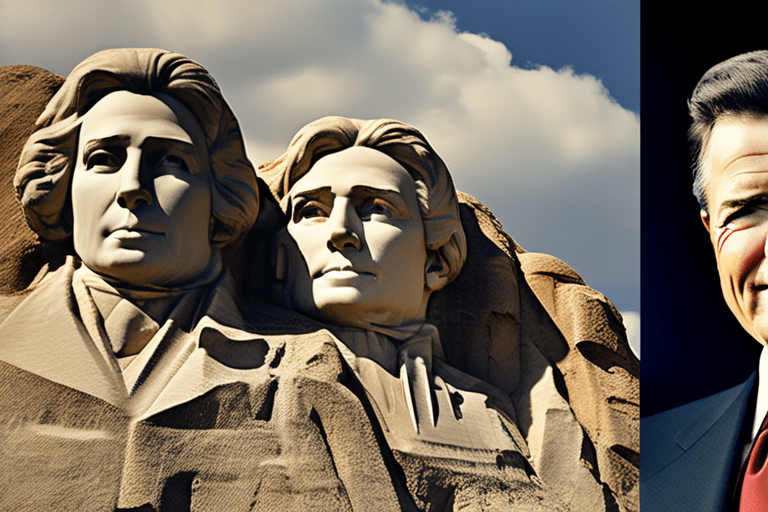
In 1980, President Ronald Reagan delivered a poignant speech at Mount Rushmore, emphasizing the enduring importance of freedom and democracy.
Artistic Challenges
Sculpting the intricate details of the presidents’ faces, such as Jefferson’s glasses, presented both artistic and technical challenges for Gutzon Borglum and his team.
Economic Depression Impact
The construction of Mount Rushmore played a role in providing employment during the Great Depression, contributing to the local community’s resilience.
Presidents’ Day Celebrations
The monument serves as a fitting backdrop for Presidents’ Day celebrations, honoring the leaders depicted on its imposing surface.
Civil Rights Connection
Mount Rushmore’s completion coincided with significant civil rights events, reflecting the nation’s complex history during that era.
Enduring Legacy
Mount Rushmore’s enduring legacy as a symbol of American greatness continues to captivate visitors, fostering a sense of pride and patriotism.
FAQ’s
Answer: Gutzon Borglum led the team of workers in carving Mount Rushmore.
Answer: These presidents were chosen to symbolize key periods in U.S. history—birth, growth, development, and preservation.
Answer: Theodore Roosevelt was included for his contributions to the Panama Canal and conservation efforts.
Answer: Climbing is prohibited to ensure visitor safety and prevent damage to the monument.
Answer: The Hall of Records contains a repository of important U.S. documents, adding a historical dimension to Mount Rushmore.